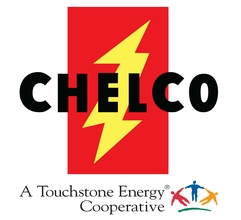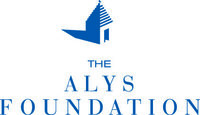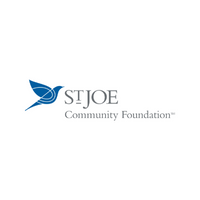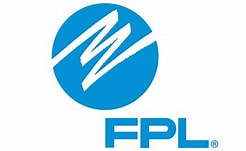Motivated Mathematicians

- School:
- Van R Butler Elementary
- Subject:
- Low Performing Students
- Teacher:
- Callie Clark
- Students Impacted:
- 17
- Grade:
- 3
- Date:
- October 12, 2017
Investor
Thank you to the following investor for funding this grant.
The Alys Foundation - $987.00
Original Grant Overview
Goal
It is my ultimate goal to prepare my students for a lifetime of success outside the classroom. I believe in the technologically advanced society we live in, a strong foundation in mathematics and technology can help achieve this long term goal. In the short term, my aim is to sure up the mathematics skills of my most struggling and disadvantaged students by incorporating additional technology into the classroom, which will allow me to more individually tailor my instruction to meet each child's needs. Specifically, I would like to achieve the following outcomes:
Objective 1: To increase student achievement in mathematics, particularly in the Economically Disadvantaged population, as evidenced by increased scores on the STAR Math Enterprise Assessment.
Desired outcome: At least 50% of the target population (students who are both low-achieving and Economically Disadvantaged, and students who speak English as a second language) will achieve an Student growth Percentile Score (SGP) of 46 or greater on the STAR Math Enterprise Assessment.
Objective 2: To increase motivation for mathematical problem solving, as evidenced by the Mathematics Attitude Survey, published in the journal, "Teaching Children Mathematics." The National Council for Teachers of Mathematics (NCTM) discuss in the journal, that students who are engaged in their learning by using manipulatives, interaction, and varied formats, are more likely to understand the purpose for their learning, thus increasing their motivation to succeed.
Desired outcome: At least 50% of the target population will demonstrate knowledge of the purpose of learning math and its connections to the real world. This will be demonstrated by the use of the Mathematics Attitude Survey. Motivation is currently moderate to low. Initial responses to the Mathematics Attitude Survey indicate that students are engaged when using concrete manipulatives as a supplement to the current, workbook-based curriculum, but still become easily bored or unmotivated during targeted practice. Student responses indicate that in order to be good in math, students believe the most important thing is to be quiet, listen, and follow directions to get an A. Others indicate that achievement in math can not increase. I hope the use of intuitive and motivating technology, engaging cooperative learning games, and targeted practice with the teacher based on instant formative assessments through the use of the iPads, students will be motivated to deepen their knowledge of the math concepts introduced. The desired outcome is for student responses to indicate that in order to be good in math you must work hard to solve problems.
Objective 3: To increase student mastery in the Mathematics Florida Standards (MAFS), as evidenced through achievement on teacher-created, curriculum-based measures in the domains of Operations and Algebraic Thinking, Numbers and Operations in Base Ten, Measurement and Data, and Geometry. Primary benchmarks on this measure include "MAFS.3.G.1: Reason with shapes and their attributes.," "MAFS.3.MD.3: Geometric measurement: understand concepts of area and relate area to multiplication and to addition.," "MAFS.3.MD.4: Geometric measurement: recognize perimeter as an attribute of plane figures and distinguish between linear and area measures.," "MAFS.3.NF.1: Develop understanding of fractions as numbers.," "MAFS.3.NBT.1: Use place value understanding and properties of operations to perform multi-digit arithmetic.," "MAFS.3.OA.1: Represent and solve problems involving multiplication and division.," "MAFS.3.OA.2: Understand properties of multiplication and the relationship between multiplication and division.," "MAFS.3.OA.3: Multiply and divide within 100.," "MAFS.3.OA.4: Solve problems involving the four operations, and identify and explain patterns in arithmetic."
Desired outcome: At least 50% of the target population will demonstrate mastery of the MAFS, demonstrated by a score of at least 80% on the aforementioned teacher-created, curriculum-based measure.
What will be done with my students
Over the last three years, using grant funds, I have implemented a small group math structure to foster real-world problem solving skills within my classroom. I began by using the same tool that many successful adults use: iPads, and put them to work for my students. Along with my iPads, I implemented interactive learning centers, and also implemented small group "teacher time." This structure allowed for a wealth of differentiation opportunities, leading to increased scores on the STAR Math Assessment, particularly in the Hispanic student subgroup. Last year, most students had access to the iPad once every other day. This year, 17 students will benefit from this grant. My goal this year is to further the program by engaging more students each day, hopefully all students, with the individualized instruction programs available on the iPads. These programs are in line with the lessons created by Engage NY, which is endorsed by the Walton County School District. Programs such as Zearn.org allow me to assign each student a different Engage NY lesson to review, based on lessons they may have struggled with. For example, if 3 students struggled with Lesson 4, that lesson would be assigned for those students to review on the iPad. Zearn.org provides visuals, videos, and targeted practice for lesson 4 for those 3 students. Meanwhile, The rest of the class can continue working on higher level skills, individualized to meet their needs. These others may dive deeper into a more advanced standard, or even explore with a related 4th grade standard. I still plan to keep the structure of 6 students engaging in the hands on learning centers, and 3-5 at a small group learning station with me, where even more individualized instruction will be given. The additional devices will help my students increase their scores on the STAR Math Assessment by allowing them to work on individualized digital lessons when not at "teacher time." This will be particularly beneficial to the low-performing students who are also economically disadvantaged, and those who speak English as a second language, both of which are targeted populations in my school’s School Improvement Plan.
Benefits to my students
I saw scores on the STAR Math Enterprise Assessment improve dramatically after implementing this program last year. While I believe that all 17 of my students will benefit from this structure, my focus is on the lowest achieving quartile of my students, particularly those who are economically disadvantaged, and those who speak English as a second language. This correlates with my school’s School Improvement Plan (SIP) goals, which state, “The school will provide quality instruction, remediation and enrichment opportunities so that all students make progress towards performing at high levels.” Particularly, the SIP goals state, “Objective #2: The median SGP for Economically Disadvantaged students on the Star Math Assessment will increase from 45 to 47.” and “The median SGP (Student Growth Percentile) for Hispanic students on the STAR Math Enterprise Assessment will increase from 40 to 45.” The STAR Math assessment therefore, will be used as a benchmark to determine my program’s success.
Budget Narrative
I am requesting 3 new Apple iPads 9.75" Wi-Fi 32GB, to be used in my classroom.
Items
| # | Item | Cost |
|---|---|---|
| 1 | Apple - iPad (Latest Model) with WiFi - 32GB - Gold | $329.00 |
| 2 | Apple - iPad (Latest Model) with WiFi - 32GB - Gold | $329.00 |
| 3 | Apple - iPad (Latest Model) with WiFi - 32GB - Gold | $329.00 |
| Total: | $987.00 |






Share
Please share this page to help in fulfilling this grant.
Email to a Friend